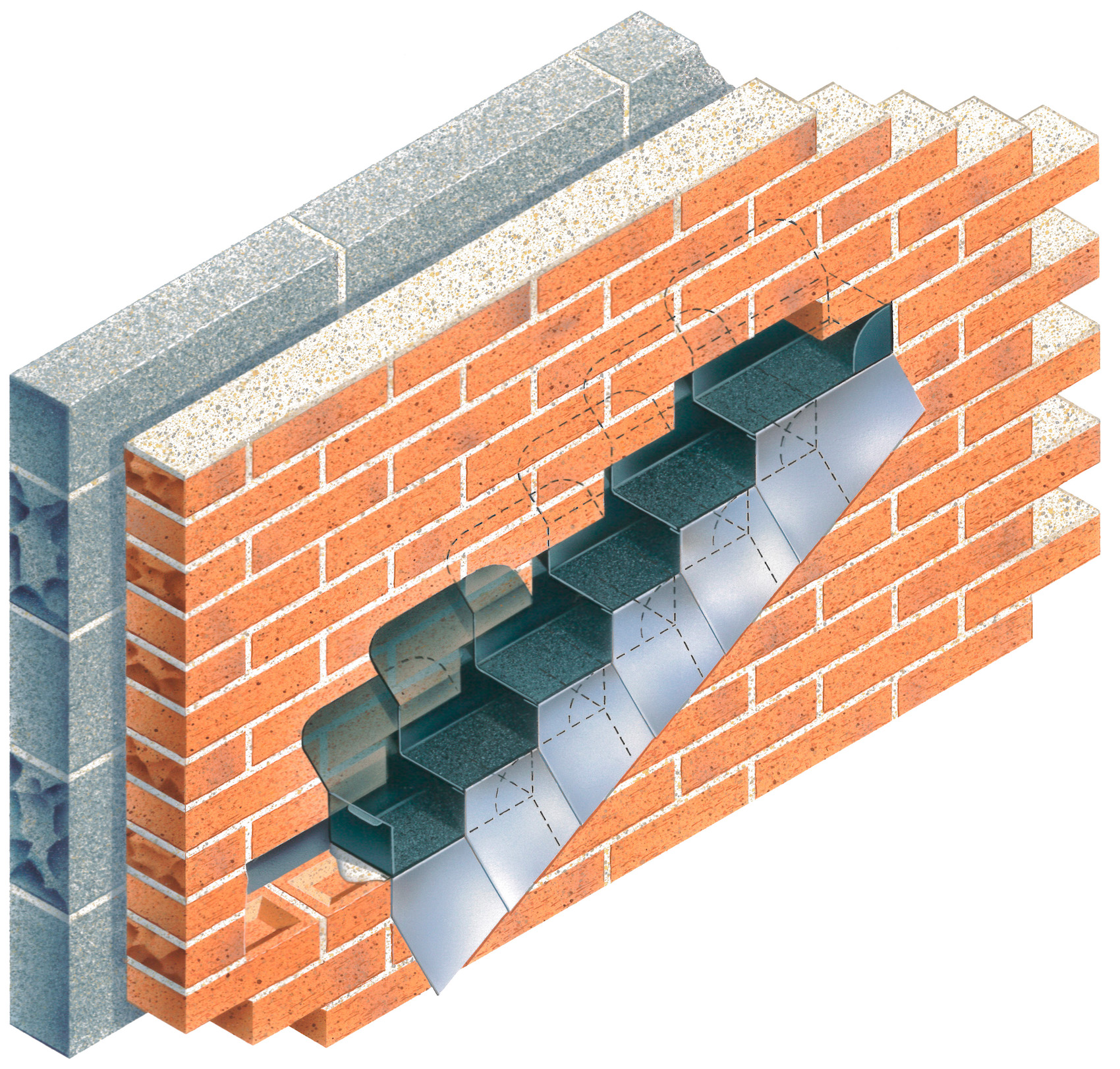Directional wind affects the performance of flashings. Rain, when blown into the leading edge of a traditional running stepped flashing, will seep under the leading edge, and in so doing will come into contact with masonry that is supposed to be kept dry. The masonry is external but becomes internal below the roofline, and once under the flashing, natural gravitation will feed dampness downward into the now ‘inside’ wall. Checking flashings should be at the top of any check list, if dampness is visible following a storm.
Flush pointing is always recommended around flashings, and unlike recessed and angled pointing, it does not support water channelling along its face. Rather, it removes the opportunity for recessed pointing to act as surface conduits, feeding rain into and under flashings. The old 4F rule should always apply: flush finished flashed face.
A proven reliable approach is to use preformed cavity trays with ready-shaped flashings already bonded on. The individual flashings overlap and this results in a protective second layer being in place at every step. If wind-driven rain challenges the leading edge, direct contact with masonry is prevented as the under-flashing arrests the water. Consequently, this type of tray manufactured by the longest-established specialist, Cavity Trays Ltd, and known as the Type X for gable abutments, is favoured, especially on exposed sites. With the current weather changes nationwide, can anyone be certain where exposed areas in the UK start and finish?
Source: Architecture Today




